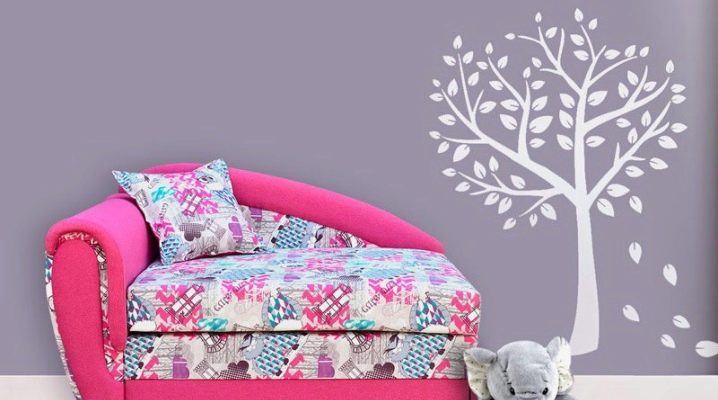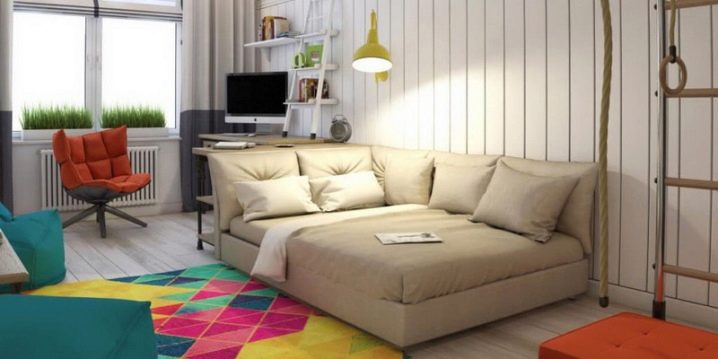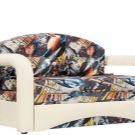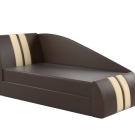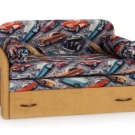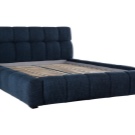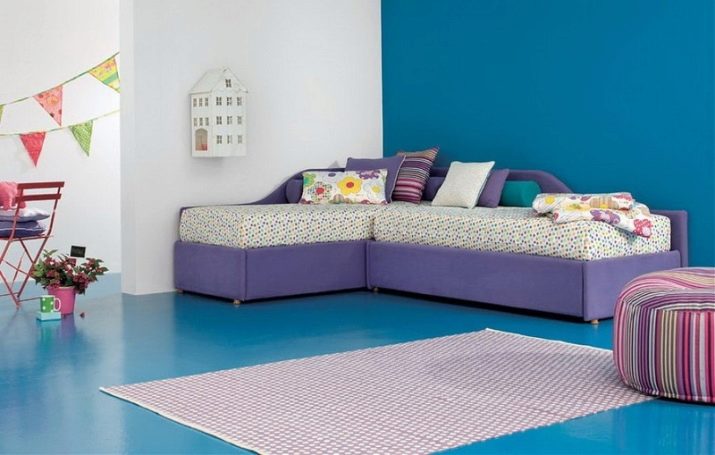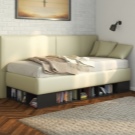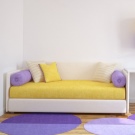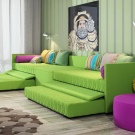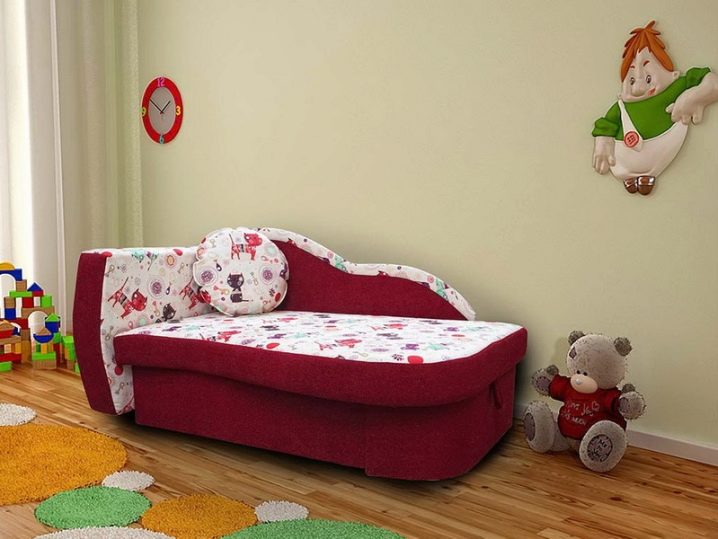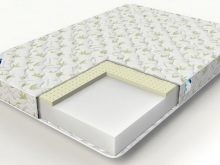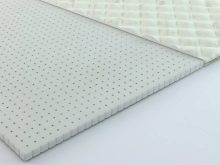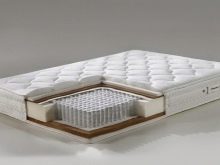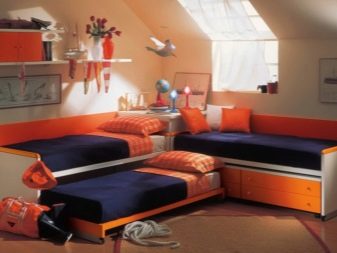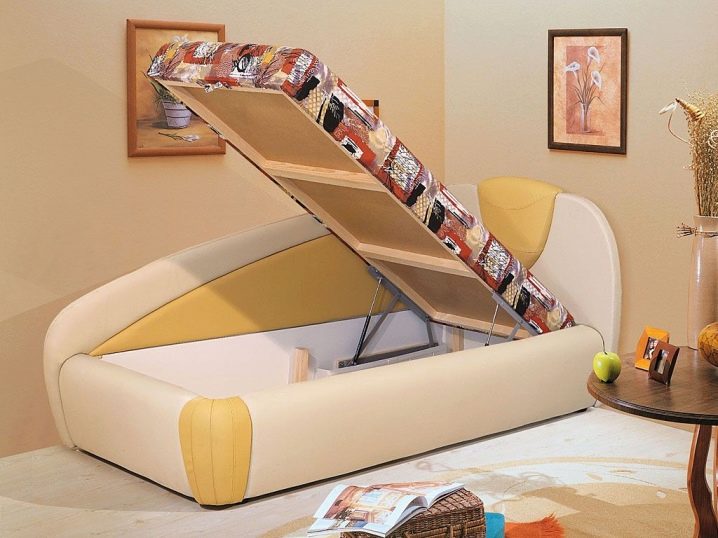Children's orthopedic sofas: types and tips for choosing
Children's orthopedic sofas - functional furniture designed for the daily sleep of the child. Basically, the owners of small apartments stop at the choice of such a piece of furniture, as the sofas will not only ensure a healthy and full sleep of the child, but will also help preserve the useful space in the room.
Special features
Sofa for children with orthopedic basis - anatomical product, contributing to the proper support of the spine. Due to the optimum stiffness of the mattress, the child’s spine will not sag during prolonged sleep.
Children's sofas have the following features:
- Compact, which allows you to install furniture in small spaces.The width of most types of models in the folded state does not exceed a meter.
- The strength of the transformation mechanisms. Manufacturers know that children often use a sofa or bed as a trampoline. Because of this, they reinforce all the moving mechanisms of the structure, ensuring its strength and reliability.
- The ease of addition and decomposition of the sofa, due to which even young children can cope with the task of preparing a bed.
Domestic and foreign manufacturers offer a huge selection of sofas with orthopedic mattresses. An extensive range will allow each parent to choose a model in accordance with the requirements for its design, form, transforming mechanisms and materials of manufacture.
Types of sofas
There are many types of children's sofas with an orthopedic base on the market.
Depending on the design, manufacturers produce the following types of this furniture:
- Straight variations. Classic sofas designed to be placed near the wall. Models can be equipped with a eurobook mechanism (rolling out the first half forward and lowering the back back), a book (lying, half-sitting and sitting), an accordion (accordion transformation mechanism).
- Couches with the vykatny principle of dismantling. Such models provide for an independent mattress, which is easily changed with your own hands in case of wear.
- Modular sleeping places. Such sofas include several parts that can be swapped at their discretion.
- Couch. Products not equipped with a back, having a lifting mechanism for folding.
- Angle options. Furniture designed to be placed in one corner of the room. Allows you to save space.
Depending on the model of the sofa, its design may include drawers for storing bed linen, toys or other things. Furniture is available with or without armrests. Some items in the kit are pillows. In children's sofas there are no hard edges, corners and other dangerous parts of the structure that a child may be injured while playing.
Children's sofas primarily differ from adults in size and appearance. Manufacturers come up with interesting bright designs. Furniture for children is dominated by colorful and rich colors, applications with cartoon characters. For the smallest manufacturers make styling beds for cars, ships, carriages.Such options look interesting and non-standard. They will become not only a piece of furniture, but also an elegant decor in the baby’s bedroom.
Types of orthopedic mattresses
Orthopedic mattresses for children can be either springless or made on the basis of an independent spring unit. Often for children's furniture using bases without springs, made from natural materials.
The following materials are used as filler:
- Polyurethane foam (PPU). This material can be used alone or combined with other fillers. PUF does not cause allergic reactions, it is resistant to the formation of fungus, environmental cleanliness. Polyurethane foam has a “memory effect”, that is, it is able to “memorize” and repeat every bend of the human body.
- Coconut coir. The natural filler possessing the increased rigidity. Due to this feature, mattresses with coconut fiber are purchased for children with scoliosis or for the prevention of this disease. These products are hypoallergenic. They are well ventilated, preventing the child from sweating.
- Latex. Used less often because it can cause allergies.
As well as manufacturers produce combined mattresses. In such bases several fillers are used. In this case, the mattress will have the properties inherent in each of the material used.
Criterias of choice
When buying a sofa in the nursery you need to focus not only on the cost and appearance of products, but also on their safety and convenience for the child.
Choosing furniture, it is important to consider some subtleties:
- Choose the "right" size. The length of the product should be at least half a meter more than the height of the child. If possible, it is better to give preference to the widest models for a more comfortable sleep.
- If the child has problems with the spine, the device should be purchased on the advice of an orthopedic surgeon.
- For children under 10 years old, it is better to buy a sofa with a springless mattress (its thickness should be at least 10 centimeters), and spring products with independent blocks will be suitable for older children.
- It is best to stop the choice on the sofa with natural hapoallergenic upholstery (chennil, flock, linen or cotton). It is recommended to give preference to furniture in which the upholstery material is impregnated with a composition possessing dirt and water repellency.The fact is that children often play on the couch, eat, drink juice, because of which the risks of frequent contamination of furniture are many times higher. Padding with a water-repellent effect will be easy to clean using available tools.
When choosing a sofa do not forget about the preferences of the child. However, it is not necessary to follow them recklessly either. Sometimes bright furniture with an unusual design can have a filler that is not suitable for a child or be made using materials hazardous to health. To purchase a quality product, it is imperative to ask consultants for accompanying documentation confirming the safety and environmental friendliness of the piece of furniture.
How to choose a children's orthopedic sofa, see the following video.
